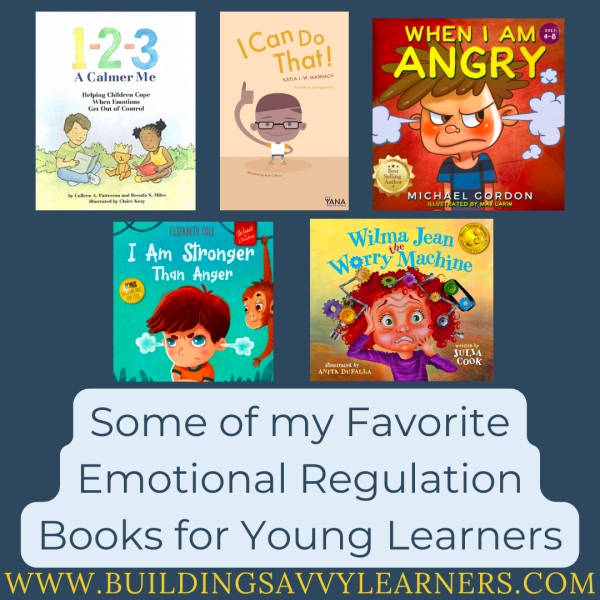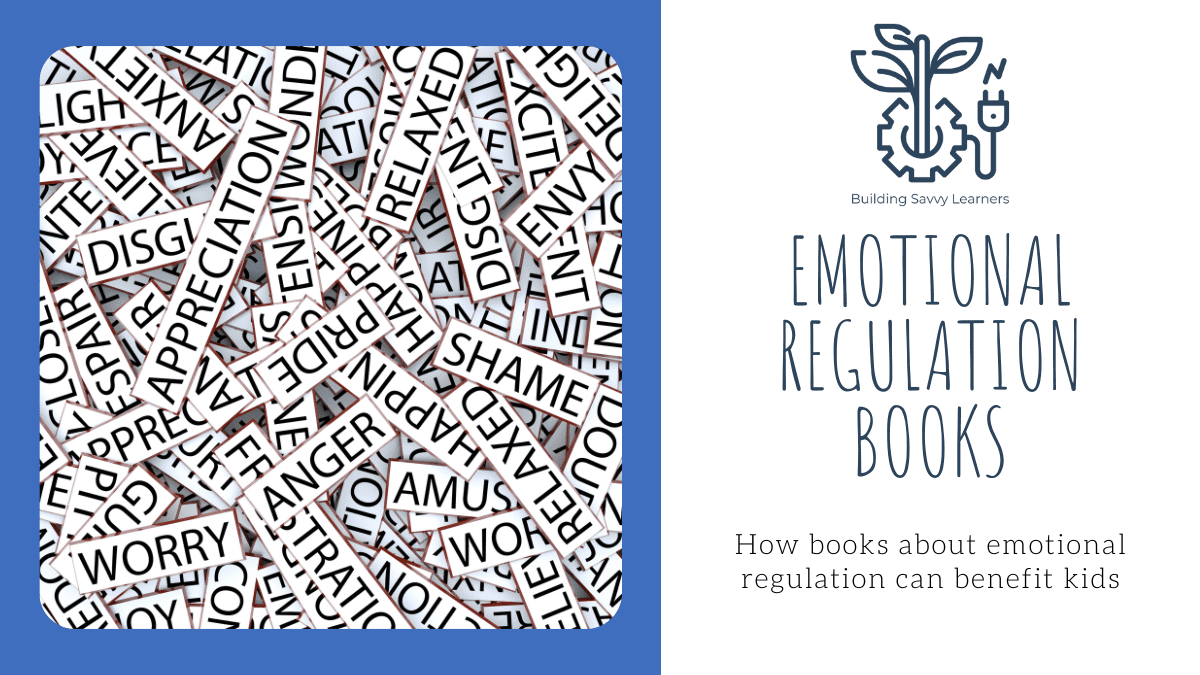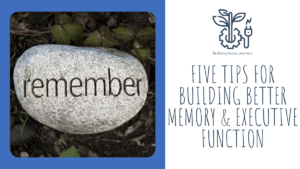Have you ever seen a child overreact to a situation? Maybe it’s a toddler throwing a tantrum or a teen becoming enraged over something that seemed like no big deal. In both instances, the young person is dealing with emotional regulation issues. And emotional regulation is sometimes the most challenging executive function skill to handle.
What is Emotional Regulation?
According to Psychology Today, emotional regulation describes “the ability to exert control over one’s own emotional state.” Rather than going into fight or flight mode, people with emotional regulation skills are able to identify their feelings and use strategies to handle them. They can self-soothe and manage their emotions. Even if they’re extremely upset, they can wait until they’re in a better mood before saying or doing anything. This can be critical for maintaining social relationships and avoiding poor decisions.

Although I spent most of my career in an upper elementary classroom, I encountered many students who needed emotional regulation help. Whether it was handling playground disputes or tolerating work they found challenging, students needed to build these skills. One strategy that I used to support this was incorporating children’s books.
Why incorporate children's books on feelings and emotions?
I have always loved using read-alouds as a way to address tough topics with kids. I’ve blogged before about the importance of reading to older kids, but it’s extra important in the context of developing social emotional skills. Students with emotional regulation struggles can often see themselves in the characters of these books. They feel a connection to a character who may see the world from a similar perspective. Moreover, these books often introduce strategies that help the character overcome their problems. Rich conversations about those strategies can result, including why they work and when they might be helpful for us to use.
Students with stronger executive function skills also enjoy reading these books. They develop more empathy for the characters who are experiencing challenges. The students begin to appreciate different perspectives and embrace inclusion. They also enrich the discussions about useful strategies and troubleshooting when things go wrong. As a result, I highly recommend incorporating books into discussions about executive function skills.
(Note: This post contains affiliate links. As an Amazon associate, I earn from qualifying purchases. That means if you click on a link and make a purchase, I will get a small commission at no additional cost to you. To learn more about why I use affiliate links, you can read my disclosure policy. Thank you for supporting Building Savvy Learners.)

My favorite books about emotional regulation for young learners
While there are lots of books available in this category, here are a few of my favorites for the pre-K through second grade crowd. All are appropriate for read aloud, and a few could be read independently.
1-2-3 A Calmer Me by Colleen Patterson
I first discovered this book when I heard my first grade daughter reciting the rhyme “I-2-3 a calmer me, 1-2-3, I hug me…” I asked her what she was doing, and she told me how she had read this book at school. It showed her a strategy for calming herself down, so she was trying it. Naturally, I had to check out the book for myself.
The rhyme introduces a breathing technique to self-regulate. The main character then works through several scenarios where the technique applies. She even goes on to teach it to a friend. I recommend 1-2-3 A Calmer Me as an early introduction to this topic for the youngest readers.
I Can Do That by Kayla J. W. Marnach
While Amazon says this book is for ages 8-12, the audience is much younger if read aloud. It introduces several strategies for calming different emotions. It also addresses energy dysregulation. This happens when kids feel extra fidgety and need a way to channel their energy to get back under control. The language is empowering, and the book also includes a section for parents and caregivers. I Can Do That is a good introduction to emotional regulation and self-regulation strategies.
When I Am Angry by Michael Gordon
When I Am Angry follows a character named Josh who gets angry over several different situations. His parents and siblings use three different strategies to help him manage his anger. They make imaginary anger balls that they can throw away. If that’s not enough, they use breathing techniques and meditation. The illustrations are engaging, and the story is easy for young children to relate to.
I Am Stronger than Anger by Elizabeth Cole
The main character in this story, Nick, triggers into a rage when he doesn’t get his way at the zoo. He learns calming techniques from the different zoo animals who help him regain control. I like the way this book acknowledges that these outbursts can affect other people. This is one of the few books on this list that encourages apologizing to others who may have been harmed during the outburst. For that reason, I think I Am Stronger than Anger is a good addition to any social-emotional library.
Wilma Jean the Worry Machine by Julia Cook
Wilma Jean worries about everything. Her tangents through “what if” scenarios are impressive in length. When her anxiety gets to the point that it starts interfering with her enjoyment of other activities, the adults around her intervene. They help her list out all her worries onto index cards. Then they sort them into things that she can control and things that she can’t. This helps her see that she’s more powerful than she realizes in controlling her circumstances.
While I’ve listed Wilma Jean the Worry Machine as a book for young learners, it could also be used with upper elementary learners dealing with anxiety. Each age group may have different take-aways from the story, but the strategy about control is a good one for all ages.

Emotional regulation books for kids in upper elementary
Managing relationships between older elementary students can sometimes be challenging. Minor grievances can escalate when students don’t have emotional regulation skills. These are some of my favorite books about emotional regulation for older students.
Pause Power: Learning to Stay Calm When Your Buttons Get Pushed by Jennifer Law
Gabe is a student who gets annoyed and angered by people around him. When he’s sent to a cool down spot in the classroom, he learns about his “pause power.” The message of the story is that while you can’t control what happens around you, you do get to control how you react to it. It suggests removing yourself from the situation until you’ve had a chance to calm down using breathing techniques. Then you can reengage once you’ve regulated your emotions. The book explores different scenarios where Gabe needs to practice this. Pause Power also promotes the idea that these strategies get easier with practice.
I'm Stretched! by Julia Cook
The main character in this story is struggling to manage stress. She’s worried about finding time to juggle the demands from homework, friends, family, grades, and extracurriculars. It’s becoming overwhelming to her. The book reinforces executive function strategies for making plans while also incorporating emotional regulation tricks. I’m Stretched! is a good fit for upper elementary students and middle schoolers who relate to having full schedules.
I Just Don't Like the Sound of No! by Julia Cook
RJ is a kid who does not like the sound of “no.” Every time someone says no to him, he argues and negotiates to get them to change their minds. He doesn’t realize how irritating his reactions are to others, making his social relationships difficult. Eventually his teacher intervenes and teaches what it means to accept no for an answer. If RJ disagrees with the outcome, he is encouraged to bring it up at a later time rather than argue in the moment. The book also teaches productive ways to disagree with someone. As RJ practices these skills, he finds his social relationships improving.
Students with emotional regulation issues are often guilty of excessive arguing because they don’t think about the consequences of their actions. I Just Don’t Like the Sound of No gives a step-by-step approach to handling when adults say no. In some instances, I’ve reproduced the steps on notecards for students to refer to as they practiced the strategy. Having these skills broken down can make a huge difference to students.
Thanks for the Feedback...by Julia Cook
In case you haven’t noticed, I’m a huge fan of Julia Cook’s books. And so many of her books about emotional regulation have great strategies for students. This one was helpful when I had a student who became enraged by feedback – positive or constructive.
Thanks for the Feedback again follows RJ, but this time, he’s having a hard time handling feedback. Sometimes, he makes inappropriate comments to kids who are trying to compliment him. Other times, he becomes livid when the teacher asks him to fix something he’s doing in class. The story breaks down the purpose and intent of feedback and teaches what students should do when they receive it. As RJ practices the strategies, he develops better relationships with peers. He also gets better at different skills because he incorporates the feedback he has received.
The Kids' Guide to Staying Awesome and In Control by Lauren Brukner
This book was a recent addition to my library, and it’s one that would be better given to an older student than used as a read-aloud. However, this book is a comprehensive resource of emotional regulation strategies. The book provides a menu of body breaks that can be done covertly without interrupting others. It also shows different types of tools that can be used like noise-reducing headphones or tactile cushions and weighted lap pads. There’s also a chapter with detailed illustrations and instructions for big body breaks. These work best outside of the classroom when a student needs to get away from the situation.
The second half of the book targets parents and teachers. It explains how and why these strategies help with emotional regulation. It includes charts and graphics to photocopy as a reference of the different strategies available.
The Kids’ Guide to Staying Awesome and In Control is a book that I wish existed while I was still in the classroom because I could have used it with so many students.

Books about Emotional Regulation as a Helpful Tool
Sometimes students who have emotional regulation challenges can be difficult to talk to. They may become defensive when approached about their needs, and they may not take well to constructive feedback. That’s yet another reason why these books can be a powerful tool. When you incorporate children’s books about emotional regulation, you can shift the focus to the characters while also teaching skills and strategies. These books can then be referenced as emotional regulation needs arise. For example, “I think RJ’s strategy might work for you, too! Let’s try it and see if it helps.” Whether you’re a parent or a teacher, I highly recommend the books on this list.
If you are a parent who wants to learn more about executive function and how to help your child develop a variety of skills, including emotional regulation skills, then now is the time when you can join my year-long online course. Each month, we’ll be working through strategies centered on a different executive function theme. If you want to help your child but aren’t sure where to begin, this course is for you. Visit https://buildingsavvylearners.com/parents to learn more and enroll today!



















